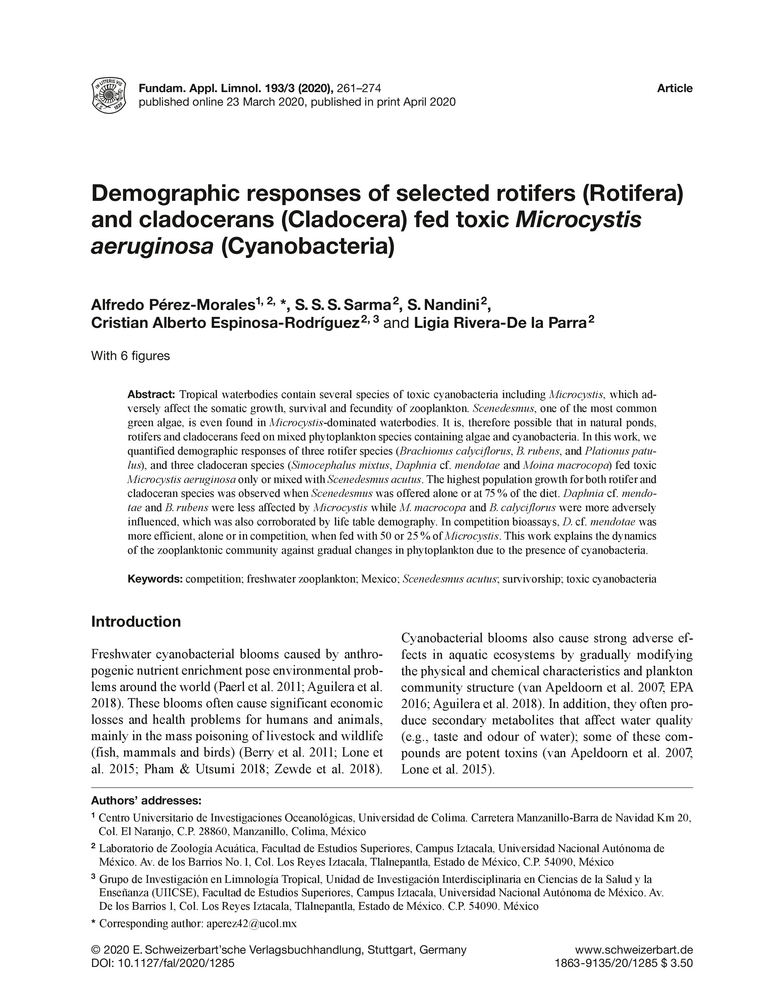Original paper
Demographic responses of selected rotifers (Rotifera) and cladocerans (Cladocera) fed toxic Microcystis aeruginosa (Cyanobacteria)
Pérez-Morales, Alfredo; Sarma, S. S. S.; Nandini, S.; Espinosa-Rodríguez, Cristian Alberto; Rivera-De la Parra, Ligia

Fundamental and Applied Limnology Volume 193 Nr. 3 (2020), p. 261 - 274
63 references
published: Apr 21, 2020
published online: Mar 23, 2020
manuscript accepted: Feb 24, 2020
manuscript revision received: Feb 24, 2020
manuscript revision requested: Jan 2, 2020
manuscript received: Oct 22, 2019
ArtNo. ESP141019303006, Price: 29.00 €
Abstract
Tropical waterbodies contain several species of toxic cyanobacteria including Microcystis, which adversely affect the somatic growth, survival and fecundity of zooplankton. Scenedesmus, one of the most common green algae, is even found in Microcystis-dominated waterbodies. It is, therefore possible that in natural ponds, rotifers and cladocerans feed on mixed phytoplankton species containing algae and cyanobacteria. In this work, we quantified demographic responses of three rotifer species (Brachionus calyciflorus B. rubens, and Plationus patulus), and three cladoceran species (Simocephalus mixtus Daphnia cf. mendotae and Moina macrocopa) fed toxic Microcystis aeruginosa only or mixed with Scenedesmus acutus. The highest population growth for both rotifer and cladoceran species was observed when Scenedesmus was offered alone or at 75 % of the diet. Daphnia cf. mendotae and B. rubens were less affected by Microcystis while M. macrocopa and B. calyciflorus were more adversely influenced, which was also corroborated by life table demography. In competition bioassays, D. cf. mendotae was more efficient, alone or in competition, when fed with 50 or 25 % of Microcystis. This work explains the dynamics of the zooplanktonic community against gradual changes in phytoplankton due to the presence of cyanobacteria.
Keywords
competition • freshwater zooplankton • Mexico • Scenedesmus acutus • survivorship • toxic cyanobacteria